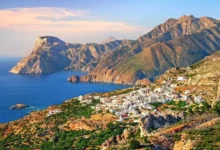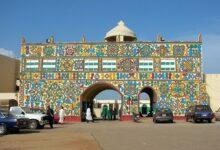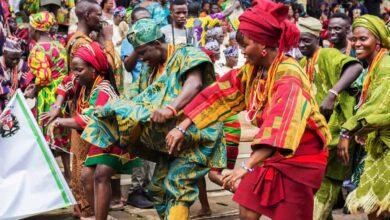
Top 15 Nigerian Royal Palaces
Nigeria is home to many ancient kingdoms and rich cultural traditions. Scattered across the country are the palaces of past and present monarchs, serving as reminders of Nigeria’s regal history. Here is a look at 15 of the most impressive royal palaces in Nigeria.InformationGuideNigeria
Read Also: 15 Best Palaces in Nigeria
👉 Relocate to Canada Today!
Live, Study and Work in Canada. No Payment is Required! Hurry Now click here to Apply >> Immigrate to CanadaThe Top 15 Nigerian Royal Palaces Are:
1. Oba’s Palace, Benin City
The Oba’s Palace in Benin City, Edo State dates back to the 13th century when the Eweka dynasty was established. The palace walls and rooms are decorated with intricate bronze plaques depicting court life and battle scenes from Benin’s history. The palace remains the home of the Oba of Benin today.
2. Emirs of Kano Palace
Built in the 16th century, the Emir of Kano’s palace is an impressive structure made of mud. It has served as the home and administrative center of the Emir of Kano for centuries. The central courtyard features a pyramidal tower capped with a conical spire, a signature of palace architecture in Hausaland.
3. Olowo’s Palace, Owo
Thought to be one of the oldest surviving palaces in Nigeria, the Olowo’s Palace in Owo, Ondo State was built in the 14th century. It incorporates Yoruba and Nupe architectural elements, including towering eaves, intricate wood carvings and plaster artwork. The palace remains the residence of the Olowo of Owo.
Read Also: 15 Best Palaces in Africa
4. Ado Ekiti Royal Palace
Built in 1820, the Ado Ekiti Royal Palace in Ekiti State is a sprawling complex of courtyards and structures. It houses a museum displaying regalia, crowns, scepters and artifacts documenting Yoruba history. The veranda of the Ofin where the king holds court features ornately carved wood columns and ceiling designs.
5. Akarigbo’s Palace, Sagamu
The Akarigbo’s Palace in Sagamu, Ogun State has undergone several reconstructions and renovations over the centuries. The most recent version was built in 1854 in the Brazilian architectural style popular at the time. Intricate wood carvings, king posts, verandas and mouldings decorate the palace buildings.
Read Also: 15 Most Beautiful Palaces in Nigeria
6. Alaafin of Oyo’s Palace
The palace of the Alaafin of Oyo in Oyo State was built in the 17th century. It features traditional Yoruba design elements including open courtyards, expansive verandas and elaborate wood carvings. In the past, the palace housed over 100 courtyards and several wives of the Alaafin.105 Good Morning Messages
👉 Relocate to Canada Today!
Live, Study and Work in Canada. No Payment is Required! Hurry Now click here to Apply >> Immigrate to CanadaRead Also: Top 15 Nigerian Government Buildings
7. Emir of Zaria’s Palace
Built in the early 20th century, the Emir of Zaria’s palace in Kaduna State is an impressive fusion of Western Sudanese and Colonial style architecture. It has two grand gateways, expansive corridors and a large central courtyard. The palace is still used for state events and royal ceremonies.15 Facts About Igbo Culture
8. Ooni of Ife Palace
The Ooni of Ife’s palace in Osun state is regarded as a sacred site among Yoruba people. The current palace was built in the early 1900s in a colonial Brazilian architectural style. The palace grounds house shrines to Yoruba deities and sacred groves. The palace remains the home of the reigning Ooni of Ife.
9. Obi of Onitsha’s Palace
Built in the early 1900s, the Obi of Onitsha’s palace is considered a nationally significant monument. The palace exemplifies the blend of European and Igbo architectural styles common in the early 20th century. Surrounded by red walls, the palace compound consists of living quarters, shrines, servants’ quarters and galleries.
10. Emir of Bauchi’s Palace
The Emir of Bauchi commands a fortified palace complex built between 1812 and 1915. It comprises several traditional Hausa architectural elements like an ancient defensive wall, gatehouses and various ceremonial spaces. The palace architecture fuses Hausa, Kanuri and colonial influences.NYSC Portal
11. Olu of Warri’s Palace
Located in Warri kingdom, the Olu of Warri’s palace is designed in the typical style of palaces in Niger Delta riverine communities.Top 15 Nigerian Royal Palaces
It features wooden ornate carvings, pillars supporting large overhanging slanting roofs and open verandas. The palace remains the residence and office of the reigning Olu.200 Romantic Messages
12. Akoko Palace
Akoko Palace in Akungba Akoko, Ondo State was built in 1815 by Owa Ale, using terracotta bricks, sticks and indigenous mortar. It features beautiful wooden palace doors with intricate carvings depicting Owa Ale’s exploits and murals telling Akoko’s history. The palace underwent renovations in 2006.
Read Also: Top 15 World’s Finest Accommodations
13. Emir of Gwandu’s Palace
With its distinctive pyramidal towers, crenelated parapets and elaborate carvings, the Emir of Gwandu’s palace in Kebbi State is an excellent example of royal architecture in Hausaland. The current structure was rebuilt in the early 20th century within a walled compound following the former palace’s destruction.JAMB Portal
14. Orodje of Okpe’s Palace
Located in Sapele, Delta State, the Orodje of Okpe’s palace exemplifies a unique blend of Victorian and Portuguese architecture. The palace features high ceilings, arched doorways, galleries and verandas. The facade displays a European-style pediment and colonnades.Top 15 Traditional Markets in Nigeria
15. Oba Alayeluwa of Efon-Alaaye’s Palace
Built in 1933, the Oba Alayeluwa of Efon-Alaaye’s palace in Ekiti integrates Yoruba, Brazilian and Colonial architectural elements. Distinctive features include an imposing portico with Doric columns, Georgian sash windows, and indigenous Yoruba-style doors. The palace remains a center of culture and tradition.
Conclusion
Nigeria’s royal palaces represent some of the country’s most significant architectural and historical heritage sites. The palaces provide insights into Nigeria’s political history, cultural traditions, and artistic accomplishments over the centuries. From Benin City to Oyo, these grand structures continue to be centers of ritual, ceremony and festivals, connecting present day Nigeria to its rich regal past.
Check JAMB Result
Check and Confirm: How much is Dollar to Naira







